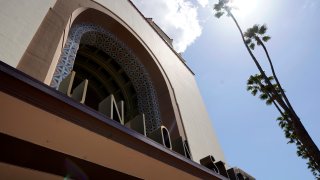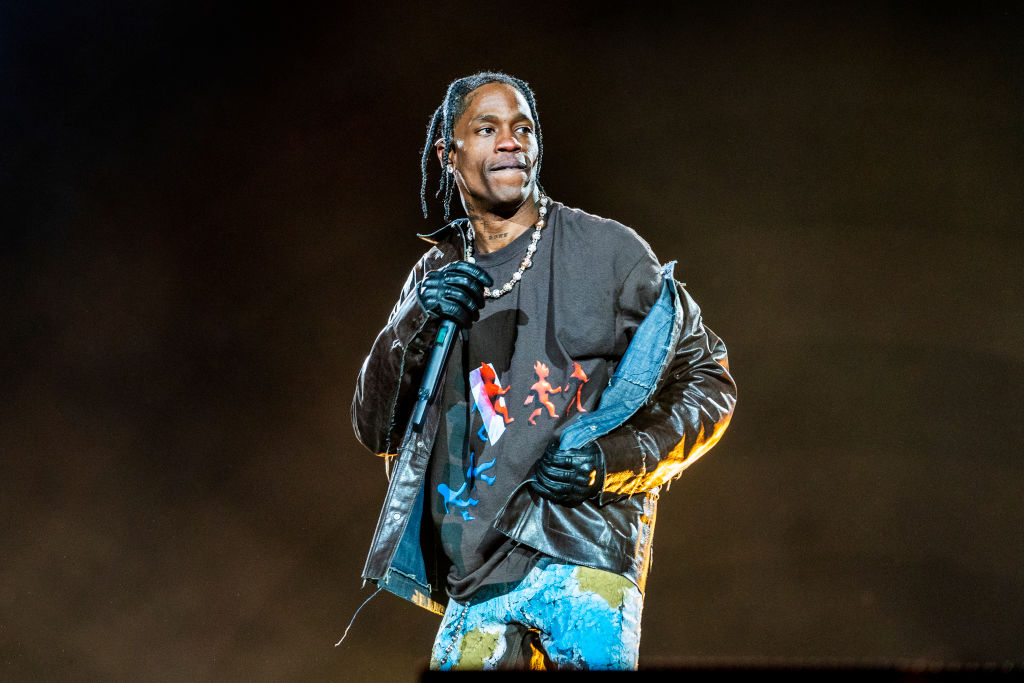
The Oscars are headed to downtown Los Angeles' Union Station this year for the first time, but the historic site and active transportation hub is already a movie star.
John Parkinson and his son Donald Parkinson’s stunning blend of Mission Revival and Art Deco styles has been a popular film site since it was completed in 1939, with supporting roles in movies from “Blade Runner” to “The Dark Knight Rises.”
“Visually, it’s such an incredible place and it’s such a throwback to old Hollywood,” said J.J. Levine, a location manager. “I love that the Oscars are going to be there."
Union Station has been in car commercials, reality shows and procedurals (Levine shot there for “NCIS: Los Angeles”). But with its beamed ceilings, Spanish tile floors and regal bronze chandeliers, it really shines in cinema when it’s playing a train station, bank, police station, club or airport.
Get a weekly recap of the latest San Francisco Bay Area housing news. Sign up for NBC Bay Area’s Housing Deconstructed newsletter.
“Through its corridors and main lobby have passed gangsters ('Bugsy'), drug dealers ('Mike’s Murder'), political protesters ('The Way We Were'), munchkins ('Under the Rainbow') and even an alien in heat disguised as a railroad conductor ('Species'),” filmmaker Thom Andersen observed in his 2003 documentary “Los Angeles Plays Itself.”
The building is also a “favorite site for movie kidnappings" in films like “Nick of Time” and “To Live and Die in L.A."
And it doesn't always “play itself.” It’s the police station in “Blade Runner” and the Los Angeles International Airport in “The Replacement Killers.” It was a New York railway station in the World War II epic “Pearl Harbor” and the modern Justin Timberlake rom-com “Friends with Benefits”; the exterior of a 1950s movie studio in “Hail, Caesar!”; Demi Moore’s pad in “Charlie’s Angels: Full Throttle”; and the insurgents’ Gotham City courthouse in “The Dark Knight Rises.” It also had a starring role in the 1950 film noir “Union Station” with William Holden and Nancy Olson, but that was set in Chicago.
Entertainment News
“I can’t wait to see it. I'm sure it will look fantastic,” said Mike Fantasia, a supervising location manager who worked there on “Catch Me If You Can” and “Seabiscuit.”
In “Catch Me If You Can,” the ticketing area was transformed into the Miami bank where Leonardo DiCaprio’s character meets Elizabeth Banks’ teller. For “Seabiscuit,” they turned the then-defunct Harvey House restaurant into a club.
“Everyone wants to go there because it’s an iconic building in Los Angeles. It’s been beautifully maintained and restored. It’s just a classic building,” Fantasia said. “You see the exterior, you see that ticket booth — anyone who knows L.A. knows where you are.”
It’s not cheap, Fantasia said, but, “You more than get your money’s worth."
Union Station also recently wrapped an eight-year, $4.1 million restoration project, so it will be looking its best for the stars and viewers around the world on Sunday.
The Academy Awards show has moved around quite a few times in its 93 years. The first ceremony, a banquet with 270 guests, was held at The Hollywood Roosevelt Hotel in 1929. After that it shifted to the Ambassador and Biltmore hotels. It’s been held at Grauman’s Chinese Theatre, the Shrine Civic Auditorium, the Academy’s Melrose Avenue Theater, the Pantages Theater, the Santa Monica Civic Auditorium, the Dorothy Chandler Pavilion, and, since 2002, the Dolby (formerly Kodak) Theater at Hollywood and Highland, just a block away from the inaugural show’s location.
“The producers were clear that they were committed to doing this in a different way and looking at alternative venues,” said David Rockwell, the production designer for the 93rd Oscars. “We thought about ways to create the elegance of the earliest Oscars."
There will still be some show elements from the Dolby, but the bulk of the action — from the red carpet to the ceremony — will be at Union Station.
Rockwell said the venue was “appealing on the concept level and the practical level." He noted the “generous scale” and distinctive look of the spaces.
The show's producers will be using natural light from the 40-foot windows in the main show area before the sun sets during the ceremony, and localized lighting at the tables in the room. It’ll be a significantly less crowded affair than in the past, down from the 3,400 available seats at the Dolby to only 170 in the main room at any given time, due to COVID-19 protocols. The idea is to make the ceremony an intimate experience for both attendees (just nominees and a guest) and the audience at home.
“It’s not about spectacle, it’s about storytelling,” Rockwell said. A constant refrain from those involved is that this year will feel more like a movie than a television show.
“It’s kind of a brilliant notion to use L.A.’s Union Station as a setting for the Oscars,” said Fandango Managing Editor Erik Davis. “It’s got that movieland history as a classic filming location and as a destination where the stars arrived in town during Hollywood’s Golden Age."
The venue choice did not come without some controversy and worries about how it will impact bus and rail services, which Metro has said will not be affected.
Reporter Alissa Walker wrote in Curbed that, “As anyone who has been there during a film shoot, navigating closed-off entrances and heavily patrolled detours, knows, it will end up negatively impacting people who rely on transit.” But the decision had already been made.
Davis thinks Union Station might be just what the show needs.
“It’s a real chameleon as a movie location with so many different looks that viewers will feel like the show is constantly changing, and that kind of versatility will hopefully help keep their attention for more than three hours. It should re-energize the Oscars,” Davis said. “There’s a sense of cinematic déjà vu about the place... even if you never visited, you have been there in many movies! When producer Steven Soderbergh said that this year’s Oscars would feel like a movie, we now know exactly what that is."



